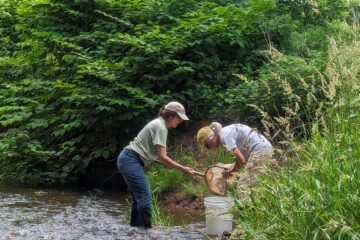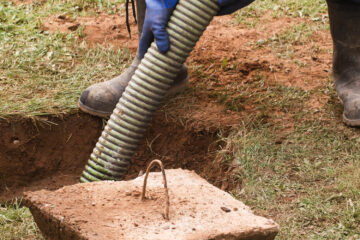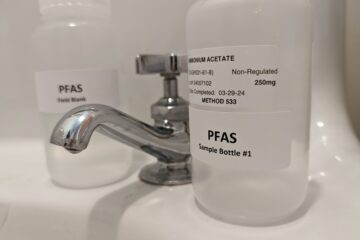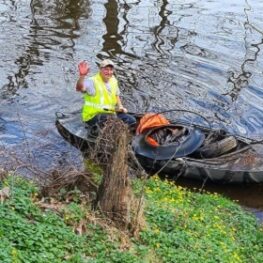 Mother Nature was on the side of over 1,000 volunteers who turned out on Saturday, April 15, to clean up streambanks in Hunterdon, Somerset and Morris counties. A line of thunderstorms held off while tons of trash and recyclables were picked up along rivers, streams, lakes and ponds.
Mother Nature was on the side of over 1,000 volunteers who turned out on Saturday, April 15, to clean up streambanks in Hunterdon, Somerset and Morris counties. A line of thunderstorms held off while tons of trash and recyclables were picked up along rivers, streams, lakes and ponds.
“We were very lucky with the timing,” said Cindy Ehrenclou, executive director of Raritan Headwaters Association (RHA), the nonprofit watershed watchdog that organized its 33rd annual Stream Cleanup. “Had those strong storms arrived a few hours earlier, there would have been a huge amount of trash washed into local waterways and eventually into the mainstem of the Raritan and, from there, into the ocean.”
Raritan Headwaters’ mantra is that everything dumped on the land eventually ends up in the water. And that can be bad news for both aquatic life and the 1.8 million New Jerseyans who rely on the upper Raritan River for drinking water.
This year’s Stream Cleanup featured volunteer efforts at 46 sites along the North Branch, South Branch, and their many tributary streams. As in previous years, the volunteers included individuals, families, scout troops, and groups from schools, churches, businesses, environmental commissions, and other civic organizations.
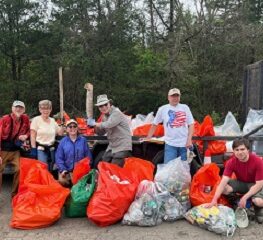 The cleanup effort spread beyond the boundaries of the upper Raritan watershed, with volunteer groups cleaning up trash along the Neshanic River in East Amwell and the D&R Canal towpath in Frenchtown. Another group of students cleaned up an area along the Raritan River in New Brunswick.
The cleanup effort spread beyond the boundaries of the upper Raritan watershed, with volunteer groups cleaning up trash along the Neshanic River in East Amwell and the D&R Canal towpath in Frenchtown. Another group of students cleaned up an area along the Raritan River in New Brunswick.
“It was a fantastic way to kick off Earth Week,” said Ehrenclou. “In only one morning, over three hours, volunteers made a real difference. Children and adults did their part to protect our most precious resource – clean water.”
According to Zak Kircher, RHA’s stewardship manager, New Jersey’s ban on plastic shopping bags, which took effect in May 2022, seems to be having a positive impact. “Significantly fewer plastic bags than in previous years were collected; the effects of the plastic bag ban are very noticeable,” he said.
Kircher also noticed a reduction in the amount of trash at sites where RHA had conducted cleanups over years. “The good news is that the density of trash had declined,” he noted. “We recruited fewer volunteers for former sites, as there was simply less trash to pick up. On the other hand there was a lot of trash at some new sites.”
The majority of items picked up by volunteers were plastics in various forms, including bottles, food wrappers, bottle tops and packaging. Larger and more unusual items hauled away this year included an air hockey table with pucks, a golf bag, and an assortment of car and truck tires.

